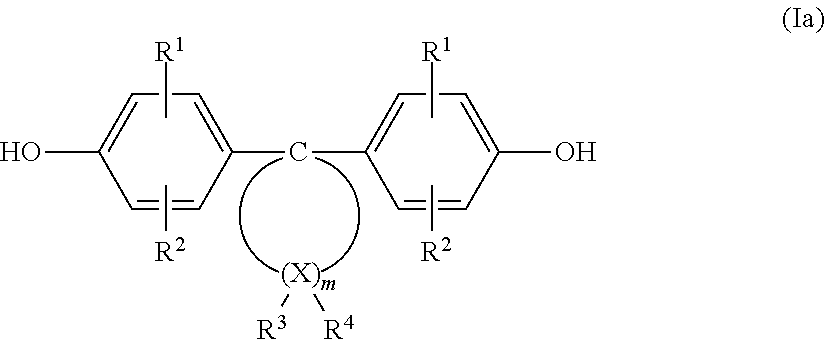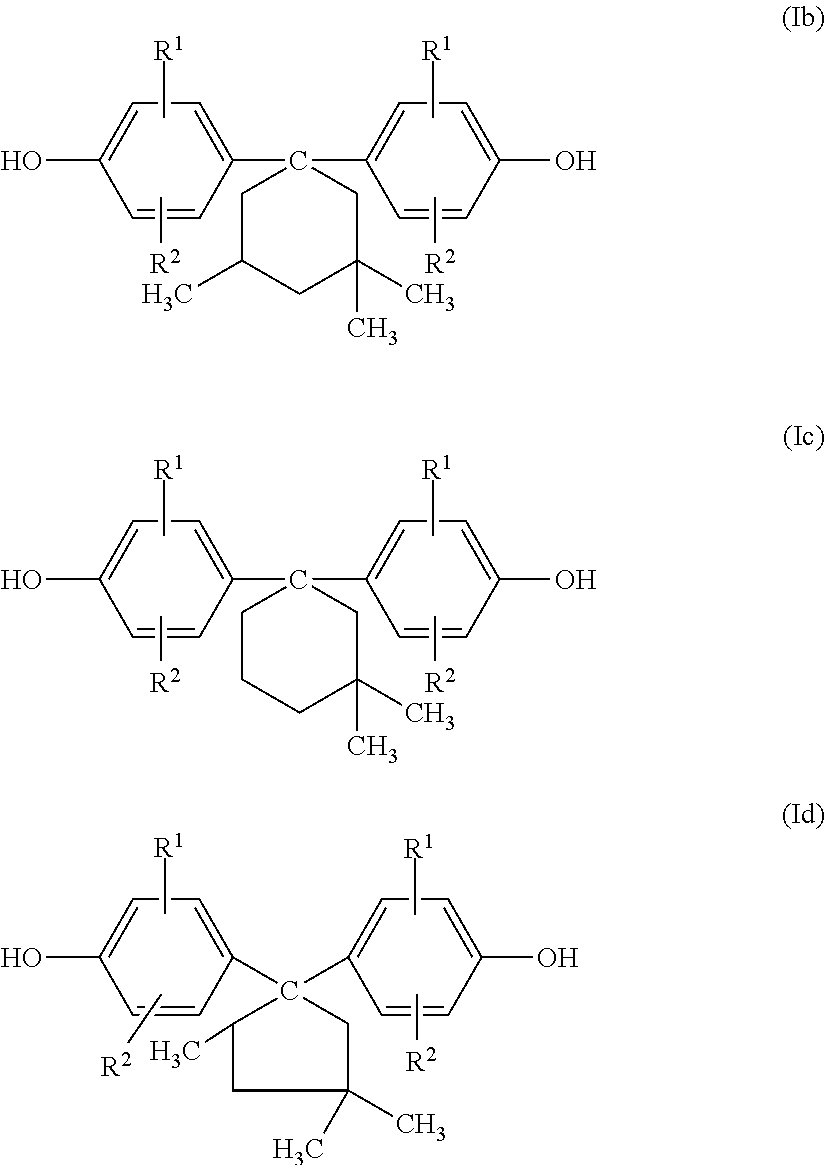Radiation-curable printing ink or printing varnish
a printing varnish and radiation cure technology, applied in the field of printing varnishes and printing inks, can solve the problems of screen obstruction, printing ink known from the prior art tends to dry up in the screen, and achieves the effect of simple radiation cure and improved ink adhesion
- Summary
- Abstract
- Description
- Claims
- Application Information
AI Technical Summary
Benefits of technology
Problems solved by technology
Method used
Image
Examples
example 1
According to the Invention
Blue Ink for Screen Printing
[0120]
TABLE 1Raw materialPercent by weightPolycarbonate 4 (20 wt. %) in 4-(1-oxo-72.002-propenyl)morpholine (80 wt. %)1-ethenylazepan-2-one4.662-phenoxyethyl acrylate (Sartomer6.44SR3339EU)Tricyclodecane dimethanol diacrylate5.00(Sartomer SR833S)Polysiloxane (levelling agent)1.00Phenyl bis (2,4,6-trimethylbenzoyl)-0.90phosphine oxide (photoinitiator)2-hydroxy-2-methyl-1-phenyl-1-propanone5.00(photoinitiator)Modified urea solution (thickening1.00agent)Sunfast blue 15:3 249-1532 (pigment)4.00
example 2
According to the Invention
White Ink for Screen Printing
[0121]
TABLE 2Raw materialPercent by weightPolycarbonate 4 (20 wt. %) in 4-(1-oxo-27.902-propenyl)morpholine (80 wt. %)1-ethenylazepan-2-one7.602-phenoxyethyl acrylate (Sartomer10.50SR3339EU)4-(1-oxo-2-propenyl)morpholine1.10Tricyclodecane dimethanol diacrylate5.00(Sartomer SR833S)Polysiloxane (levelling agent)1.00Phenyl bis (2,4,6-trimethylbenzoyl)-0.90phosphine oxide (photoinitiator)2-hydroxy-2-methyl-1-phenyl-1-propanone5.00(photoinitiator)Modified urea solution (thickening1.00agent)Tiona 595 (pigment)40.00
[0122]The glass transition temperature of the ink according to the invention from Example 1 was determined at 156° C. and that of the ink from Example 2 was determined at 88° C.
[0123]In order to coat films with the screen printing inks according to the invention the screen printing inks from examples 1 and 2 with a viscosity of approx. 4,000 mPa*s (cone-plate system with a shear rate of 100 / s) were each printed through a scr...
example 3
According to the Invention
Blue Ink for Screen Printing
[0124]When preparing a further screen printing ink according to the invention 30 wt. % of the binder from Bayer Material Science (polycarbonate 5, see above) was dissolved in 70 wt. % of UV-curable monomer 4-(1-oxo-2-propenyl)morpholine.
[0125]A diacrylate, photoinitiators, levelling agent, thickening agent and pigment were added to the binder dissolved in UV-curable monomer 4-(1-oxo-2-propenyl)morpholine, pre-dispersed with a dissolver and an ink with a fineness of grain of <10 μm was prepared using a three-roll mill or a bead mill.
[0126]The invention will now be described by the Example shown in Tab. 3, without being limited thereto.
[0127]
TABLE 3Raw materialPercent by weightPolycarbonate 5 (30 wt. %) in 4-(1-oxo-52.502-propenyl)morpholine (70 wt. %)4-(1-oxo-2-propenyl)morpholine25.60Tricyclodecane dimethanol diacrylate10.00(Sartomer SR833S)Polysiloxane (levelling agent)1.00Phenyl bis (2,4,6-trimethylbenzoyl)-0.90phosphine oxide ...
PUM
| Property | Measurement | Unit |
|---|---|---|
| softening temperature | aaaaa | aaaaa |
| softening temperature | aaaaa | aaaaa |
| glass transition temperature | aaaaa | aaaaa |
Abstract
Description
Claims
Application Information
 Login to View More
Login to View More - R&D
- Intellectual Property
- Life Sciences
- Materials
- Tech Scout
- Unparalleled Data Quality
- Higher Quality Content
- 60% Fewer Hallucinations
Browse by: Latest US Patents, China's latest patents, Technical Efficacy Thesaurus, Application Domain, Technology Topic, Popular Technical Reports.
© 2025 PatSnap. All rights reserved.Legal|Privacy policy|Modern Slavery Act Transparency Statement|Sitemap|About US| Contact US: help@patsnap.com



